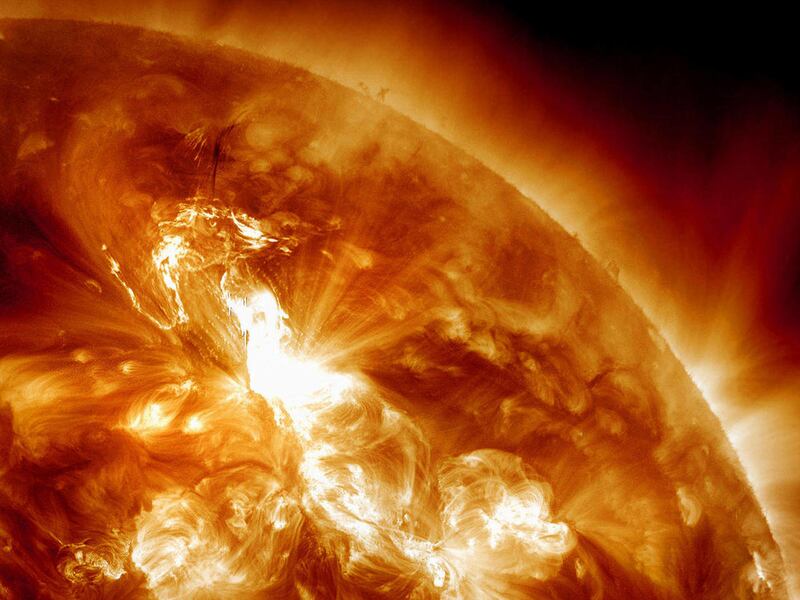On Nov. 29, a M4.4-class solar flare erupted on the surface of the sun, the strongest solar flare to take place in the past three years.
According to The Washington Post, solar flares are ranked on a five-tier scale: A-class flares are the smallest, followed by B, C, M and finally X-class flares, the largest of the bunch.
While the recent flare was stronger than any other recent history, it’s the first of many that will take place over the next few years.
In September, the sun entered a long and stormy season, one that will manifest itself here on Earth in a variety of ways.
What are solar storms?
Solar storms take place when the sun emits huge bursts of energy in the form of solar flares.
According to NASA’s website, solar flares are intense bursts of radiation that occur when the sun’s magnetic field relinquishes energy.
Solar flares are the largest explosive events to take place in our solar system and they can last from a few minutes to several hours.
What causes solar flares?
Solar activity happens in a cycle that ebbs and flows. According to The Washington Post, the upcoming series of flares marks the advent of Solar Cycle 25, an 11-year period in which storminess on the sun’s surface peaks and solar storms become more routine.
NASA’s website reports that solar activity will continue to ramp up until July 2025 and then begin to decline again.
Solar Cycle 25 is expected to be similar to the last solar cycle, which featured below-average activity, according to the Space Weather Prediction Center located in Boulder, Colorado.
How will the upcoming storms affect life on earth?
The Washington Post reports that although the sun is nearly 93 million miles away, the solar activity on its surface can have serious repercussions across the entire solar system.
Solar storms have the potential to cause high-frequency radio blackouts and interrupt communications on Earth. They can damaged power grids and disrupted satellite communications as well.
However, not all side effects are negative as solar activity is responsible for the auroras.
Sky watchers at high latitudes can expect more opportunities to see the northern lights in the upcoming seasons and, according to The Washington Post, there’s even a possibility that strong solar storms could bring the aurora into the middle latitudes.
As early as Dec. 10, the National Oceanic and Atmospheric Administration predicts that a solar outburst could cause northern lights to appear as far south as Oregon and Pennsylvania.

